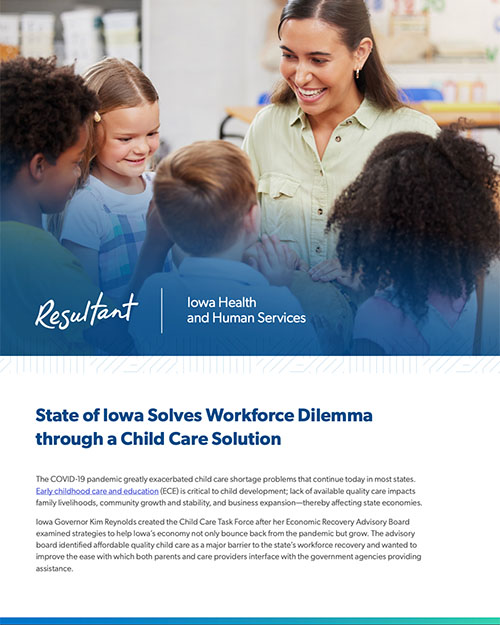Our team collaborated with Iowa to build an operational data store with an application programming interface (API) that connects provider Child Care Management Systems (CCMSs) on one side and state systems on the other. The data store holds and exchanges child care data from multiple sources, including providers and government agencies.
The greatest challenge to the project was that the state wanted an all-inclusive solution, functional regardless of which platform providers use. Resultant quickly recognized that not all child care providers would use a CCMS and created easy alternative pathways for those providers to use a cell phone to respond with their child care vacancies and desired capacity.
Resultant’s API and operational data store provide automated interfacing capabilities between any CCMS and all relevant state systems, such as the Iowa child care assistance portal, through which the Department of Health and Human Services (HHS) tracks time and attendance and pays providers serving subsidized families.
With this foundation, the teams built and can continue building data visualizations that identify gaps in services, available enrollments, and opportunities for business expansion where services are strong.







